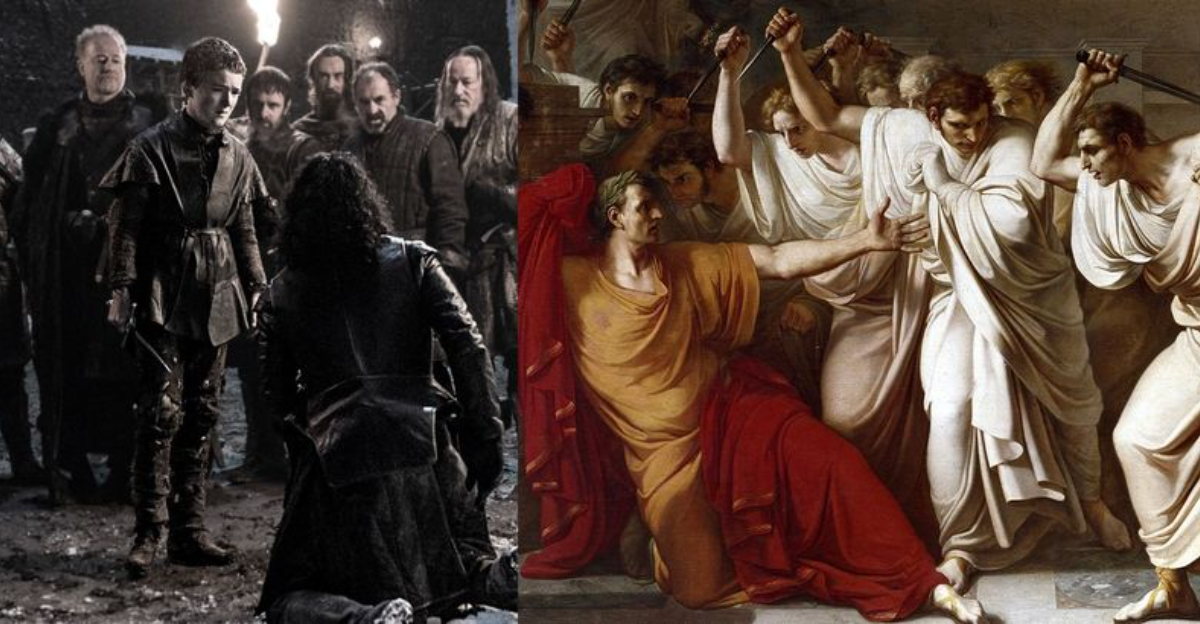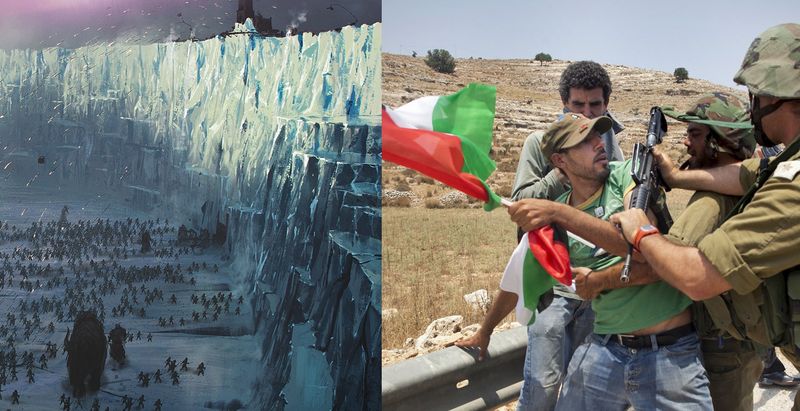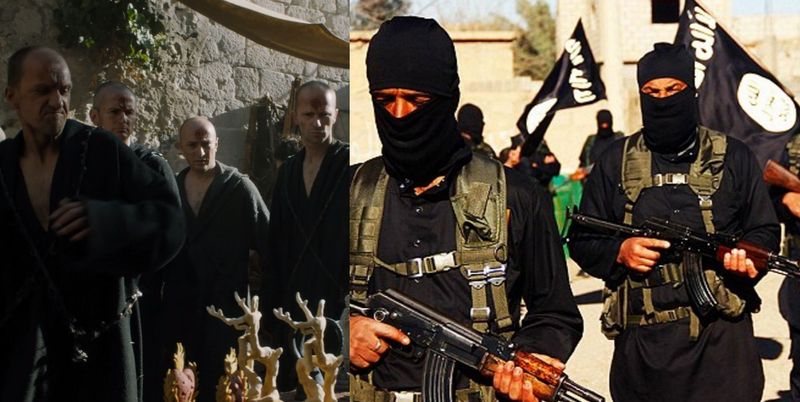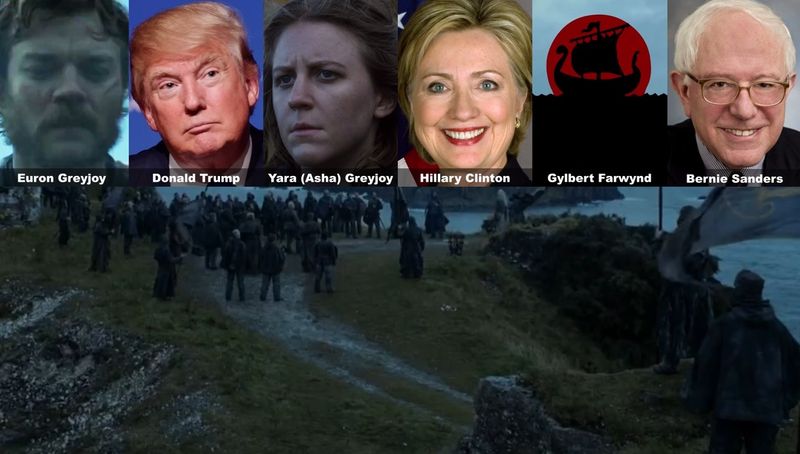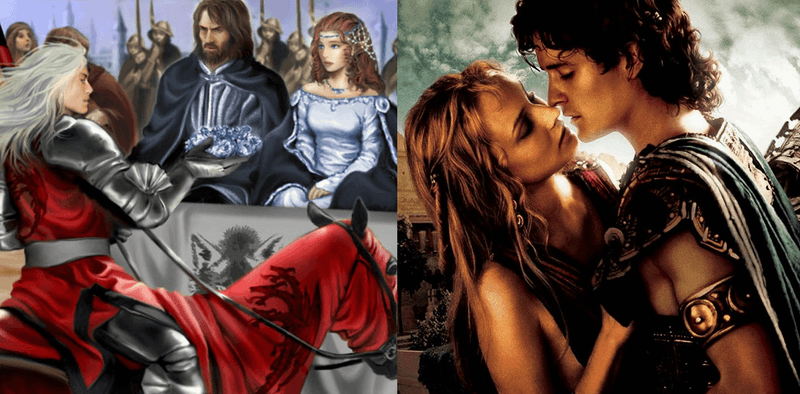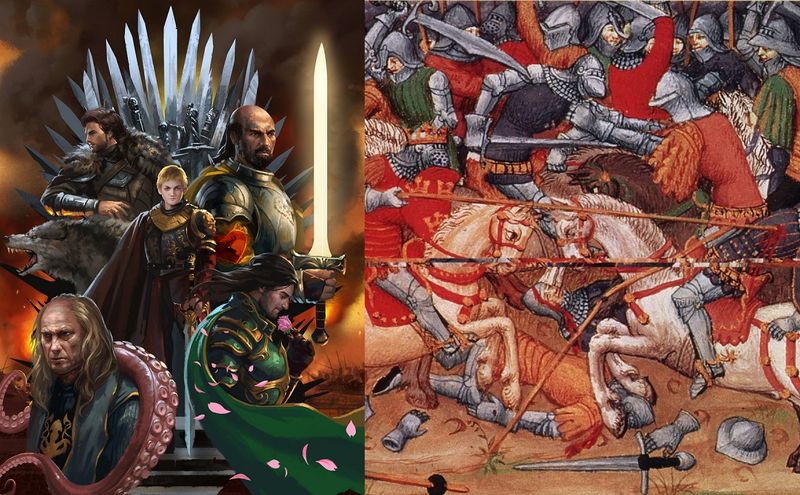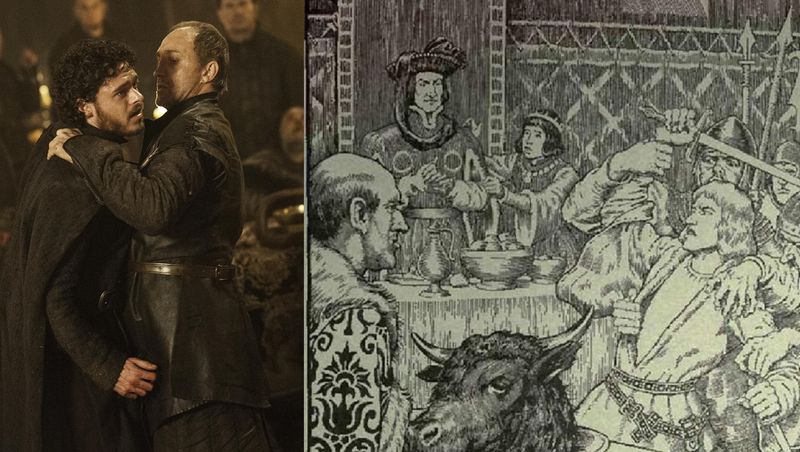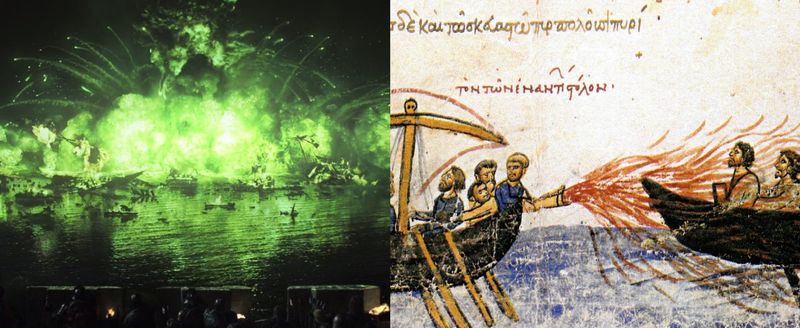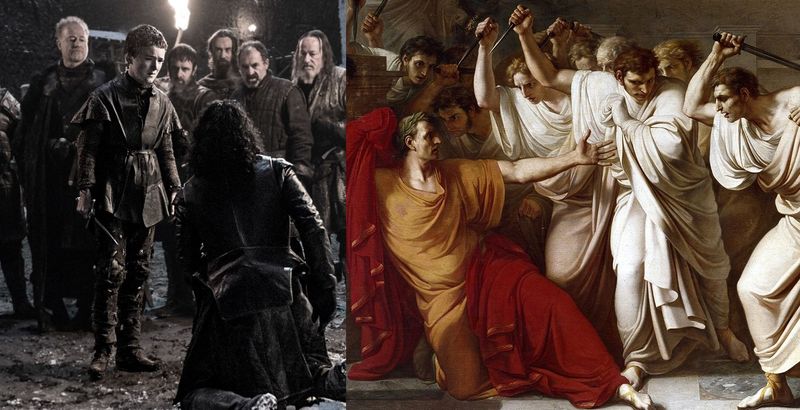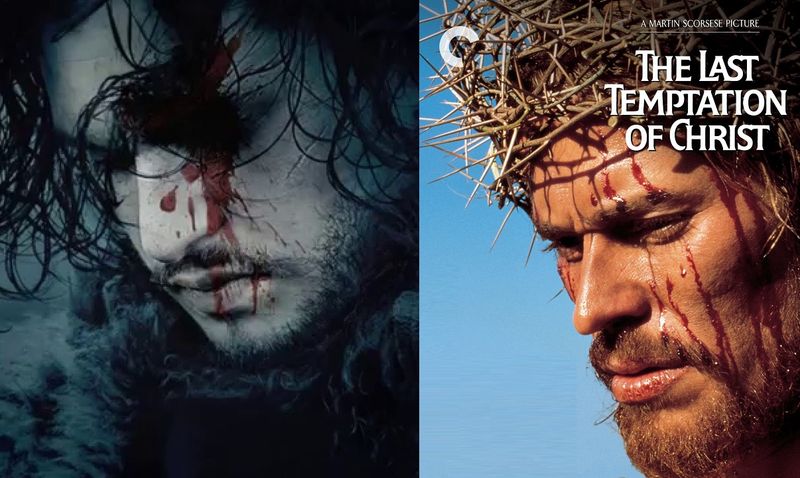“Game of Thrones,” the epic fantasy series, draws inspiration from a myriad of real historical events and figures. These parallels not only enhance the narrative’s depth but also connect the fictional tales to our reality. Here, we explore 10 historical events that find echoes in the intricate world of Westeros.
1. The Nights Watch/Wildling Conflict <-> The Israeli/Palestinian Conflict
The Night’s Watch and the Wildlings’ ongoing struggle parallels the complex and enduring Israeli-Palestinian conflict. Both embody deep-seated historical, cultural, and territorial disputes. In Westeros, the Wall separates ideological and physical worlds, much like the barriers in the Middle East.
While the Night’s Watch strives to protect the realm, their understanding of the Wildlings’ way of life is limited, mirroring modern geopolitical misunderstandings. The Wildlings, like the Palestinians, are often seen as outsiders, fighting for autonomy and recognition.
This analogy highlights how narratives, whether fictional or real, shape perceptions and conflicts.
2. The Faith Militant <-> ISIS/The Taliban
The rise of the Faith Militant in Westeros mirrors the emergence of groups like ISIS and the Taliban. These entities wield religious fervor to challenge established political powers, enforcing strict ideologies.
In “Game of Thrones,” the Faith Militant gains influence by exploiting societal unrest, similar to how modern militants capitalize on instability. Their zealotry imposes rigid doctrines, creating fear and division.
The parallel draws attention to the cyclical nature of religious extremism, illustrating how such movements resurface across eras, shaping political landscapes and societal norms.
3. The Kingsmoot <-> US Presidential Elections
The Kingsmoot, a traditional Ironborn custom, shares similarities with the US Presidential Elections. Both are forums where leaders are selected through public support, showcasing democracy’s complexities.
In Westeros, candidates vie for influence, making promises and forming alliances, much like political campaigns in the US. The process reflects public opinion’s power and the strategic maneuvers candidates employ.
This comparison highlights the intricate dance of leadership selection, where charisma, policy, and persuasion intertwine in the quest for authority.
4. Lyanna’s Stark’s “Abduction” & Robert’s Rebellion <-> Helen Of Troy’s Abduction & The Iliad
Lyanna Stark’s mysterious disappearance ignites Robert’s Rebellion, echoing Helen of Troy’s abduction and the ensuing Trojan War. Both stories center on a woman’s allure sparking monumental conflicts.
In Westeros, this event reshapes alliances and kingdoms, mirroring the ancient world’s upheaval. The personal becomes political, as individual actions lead to widespread chaos.
These narratives underscore the timeless nature of love, power, and war, revealing how legendary tales influence contemporary storytelling and historical interpretations.
5. The War Of Five Kings <-> The Wars Of The Roses
The War of Five Kings in Westeros closely resembles the Wars of the Roses, a series of dynastic conflicts in 15th-century England. Both feature noble houses vying for the throne amidst shifting allegiances.
In “Game of Thrones,” the chaos and betrayal reflect historical power struggles, where family loyalty is tested and kingdoms are divided. The brutal reality of war, with its complex motivations, is vividly portrayed.
This comparison highlights how history’s intricate battles inspire fictional narratives, reminding us of the cyclical nature of political ambition and rivalry.
6. The Red Wedding <-> The Black Dinner of 1440
The infamous Red Wedding in “Game of Thrones” draws a grim parallel to the Black Dinner of 1440 in Scotland. Both involve calculated betrayals at feasts, where hospitality turns into horror.
In Westeros, the massacre of the Starks shocks viewers, echoing the historical treachery faced by the Douglases. These events highlight the perilous nature of political alliances.
Such tales remind us of the ever-present danger in trusting too easily, as power and survival often outweigh honor in both history and fiction.
7. The Wall <-> Hadrian’s Wall
The Wall in Westeros, a massive fortification against the northern wilderness, parallels Hadrian’s Wall, built by Romans in Britain. Both structures represent the divide between civilizations and perceived barbarians.
In “Game of Thrones,” the Wall symbolizes the boundary between order and chaos, much like its historical counterpart. The physical barrier reflects cultural and ideological separations.
These parallels emphasize the enduring nature of walls as symbols of protection and division, illustrating how geography influences human history and mythology.
8. The Battle Of Blackwater Bay <-> The Second Arab Siege Of Constantinople
The Battle of Blackwater Bay in “Game of Thrones” bears striking similarities to the Second Arab Siege of Constantinople. Both feature desperate defenses against overwhelming naval assaults.
In Westeros, wildfire becomes a decisive weapon, mirroring the historical use of Greek fire. The battle’s outcome shifts power dynamics, showcasing strategic brilliance.
These events highlight how ingenuity and determination can overcome formidable odds, inspiring tales of heroism and tactical genius in both history and fiction.
9. Jon Snow <-> Julius Caesar
Jon Snow’s leadership and eventual betrayal mirror Julius Caesar’s rise and assassination. Both figures are seen as reformers, challenging the status quo with their ambitious visions.
In Westeros, Jon’s moral integrity and tactical acumen earn him allies and enemies, much like Caesar’s political maneuvers in Rome. Their stories underscore the peril of power and the fragility of loyalty.
This analogy reveals the timeless themes of ambition and vulnerability in leadership, echoing how influential figures shape their eras, for better or worse.
10. Jon Snow <-> Jesus Of Nazareth
Jon Snow’s death and resurrection draw a poignant parallel to Jesus of Nazareth. Both undergo transformative journeys of sacrifice and rebirth, inspiring devotion and change.
In “Game of Thrones,” Jon’s return alters the course of events, much like the impact of Jesus’s teachings. Their stories emphasize redemption and hope amidst darkness.
These narratives highlight the enduring power of resurrection myths, exploring themes of faith and the human spirit’s resilience in the face of adversity.
